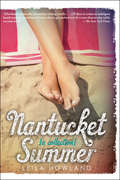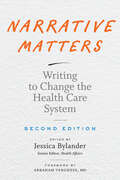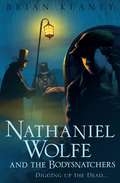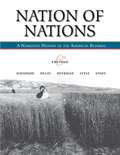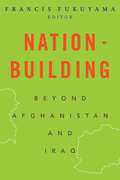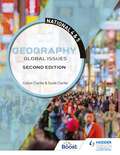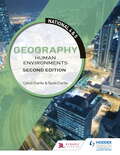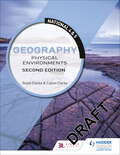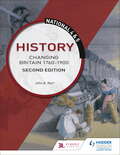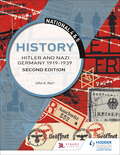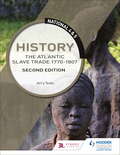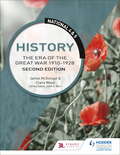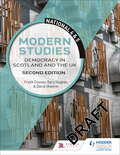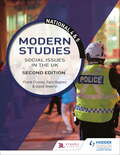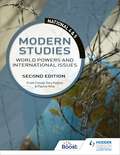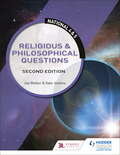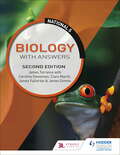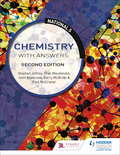- Table View
- List View
Nantucket Summer [Nantucket Blue and Nantucket Red bind-up] (Nantucket Blue)
by Leila HowlandFollow the exploits of Cricket Thompson as she explores the alluring island of Nantucket and faces the unexpected in this collection of Leila Howland's first two novels. Nantucket BlueFor Cricket, a summer on Nantucket with her best friend Jules is a life-changing dream come true. That is, until Jules and her family suffer a devastating tragedy, and Jules becomes a stranger. And instead of lying on the beach working on her tan, Cricket is making beds and cleaning bathrooms to support herself in paradise. But it's the things she hadn't counted on-most of all, falling hard for someone who should be completely off-limits-that turn her dreams into an exhilarating, bittersweet reality.Nantucket RedCricket is headed to Brown University in the fall, but to help pay for her living expenses, she returns to work on Nantucket for the summer, where she finds challenges she hadn't anticipated. As her world opens up in new ways, Cricket questions the future she's been working toward her whole life. With the pull of a love triangle complicating everything, she'll have to learn that success isn't just about reaching goals, but also about listening to what she's been trying to ignore-her own heart.Praise for Nantucket Blue "[Howland] evokes the Nantucket setting vividly . . . when it comes to indulgent beach reading, sometimes it's more fun to get pushed over by a wave than to stay safely on your towel." -The New York Times"Sand, secrets, Nantucket Reds, and romance. A fresh, feel-good debut." -The Boston Globe*"Readers should feel empowered by Cricket's efforts to grow up into a strong, honest, and emotionally intelligent young woman, even as they are enchanted by the romantic and exclusive island setting. This is a natural beach read, but will easily win Howland year-round fans, too." -Publishers Weekly, starred review"Fans of Sarah Dessen will find much to like here, as the charm of this summery yarn lies in Cricket's open appeal." -Library Journal "[Cricket's] story is told in a way that is both engaging and alluring. Definitely a standout novel in its genre." -School Library JournalPraise for Nantucket Red"Enjoyable and introspective, this is more than just a summer beach read." -Kirkus Reviews"In this novel about finding oneself and following your heart, Howland creates a character that readers will be cheering for from beginning to end." -VOYA "Nantucket Red is an engaging continuation of Cricket's story, and its pace is perfect for a long weekend or beach read." -School Library Journal
Narrating 9/11: Fantasies of State, Security, and Terrorism (A <I>Modern Fiction Studies</I> Book)
by John N. Duvall Robert P. Marzec.Contemporary fiction takes on 9/11, interrogating the global expansion of surveillance based on fantasies of US national security.Winner of the CHOICE Outstanding Academic Title of the Choice ACRLNarrating 9/11 challenges the notion that Americans have overcome the national trauma of the terrorist attacks on the World Trade Center and the Pentagon. The volume responds to issues of war, surveillance, and the expanding security state, including the Bush Administration’s policies on preemptive war, extraordinary rendition, torture abroad, and the suspension of privacy rights and civil liberties at home.Building on the work of Giorgio Agamben, Slavoj Žižek, and Donald Pease, the contributors focus on the ways in which post-9/11 narratives help make visible the fantasies that attempt to justify the ongoing state of exception and American exceptionalism. Narrating 9/11 examines a variety of contemporary narratives as they relate to the cultural construction of the neoliberal nation-state, a role that mediates the possibilities of ethnic and religious identity as well as the ability to imagine terrorism. Touching on some of the mainstays of 9/11 fiction, including Jonathan Safran Foer’s Extremely Loud & Incredibly Close and John Updike’s Terrorist, the book expands this particular canon by considering the work of such writers as Jess Walter, William Gibson, Lauren Groff, Ken Kalfus, Ian McEwan, Philip Roth, John le Carré, Laila Halaby, Michael Chabon, and Jarett Kobek. Narrating 9/11 pushes beyond a critical focus on domestic realism, offering chapters that examine speculative and genre fiction, postmodernism, climate change, and the evolving security state, as well as the television series Lost and the film Paradise Now.
Narrative Matters: Writing to Change the Health Care System
by Jessica BylanderDrawn from the popular "Narrative Matters" column in the journal Health Affairs, these essays embody a vision for a health care system that centers the humanity of patients and doctors alike.Health care decision making affects patients and families first and foremost, yet their perspectives are not always factored into health policy deliberations and discussions. In this anthology, Jessica Bylander brings together the personal stories of the patients, physicians, caregivers, policy makers, and others whose writings add much-needed human context to health care decision making.Drawn from the popular "Narrative Matters" column in the leading health policy journal Health Affairs, this collection features essays by some of the leading minds in health care today, including Pulitzer Prize–winner Siddhartha Mukherjee, MacArthur fellow Diane Meier, former Planned Parenthood president Leana S. Wen, and former secretary of health and human services Louis W. Sullivan. The collection also presents important stories from lesser-known voices, including a transgender doctor in Oklahoma who calls for better treatment of trans patients and a palliative care physician who reflects on how perspectives on hastening death have changed in recent years. A foreword written by National Humanities Medal recipient Abraham Verghese, MD, further rounds out the book.The collection of thirty-two essays is organized around several themes:• the practice of medicine • medical innovation and research• patient-centered care• the doctor-patient relationship• disparities and discrimination• aging and end-of-life care• maternity and childbirth• opioids and substance abuseContributors: Louise Aronson, Laura Arrowsmith, Cheryl Bettigole, Cindy Brach, Gary Epstein-Lubow, Jonathan Friedlaender, Patricia Gabow, Katti Gray, Yasmin Sokkar Harker, Timothy Hoff, Carla Keirns, Raya Elfadel Kheirbek, Katy B. Kozhimannil, Pooja Lagisetty, Maria Maldonado, Maureen A. Mavrinac, Diane E. Meier, Dina Keller Moss, Siddhartha Mukherjee, Donna Jackson Nakazawa, Travis N. Rieder, Aroonsiri Sangarlangkarn, Elaine Schattner, Janice Lynch Schuster, Myrick C. Shinall, Gayathri Subramanian, Louis W. Sullivan, Gautham K. Suresh, Abraham Verghese, Otis Warren, Leana S. Wen, Charlotte Yeh
Narrative as Virtual Reality 2: Revisiting Immersion and Interactivity in Literature and Electronic Media
by Marie-Laure RyanRethinking textuality, mimesis, and the cognitive processing of texts in light of new modes of artistic world construction.Winner of the Aldo and Jeanne Scaglione Prize for Comparative Literary Studies from the Modern Language Association of AmericaIs there a significant difference between engagement with a game and engagement with a movie or novel? Can interactivity contribute to immersion, or is there a trade-off between the immersive "world" aspect of texts and their interactive "game" dimension? As Marie-Laure Ryan demonstrates in Narrative as Virtual Reality 2, the questions raised by the new interactive technologies have their precursors and echoes in pre-electronic literary and artistic traditions. Approaching the idea of virtual reality as a metaphor for total art, Ryan applies the concepts of immersion and interactivity to develop a phenomenology of narrative experience that encompasses reading, watching, and playing. The book weighs traditional literary narratives against the new textual genres made possible by the electronic revolution of the past thirty years, including hypertext, electronic poetry, interactive drama, digital installation art, computer games, and multi-user online worlds like Second Life and World of Warcraft.In this completely revised edition, Ryan reflects on the developments that have taken place over the past fifteen years in terms of both theory and practice and focuses on the increase of narrativity in video games and its corresponding loss in experimental digital literature. Following the cognitive approaches that have rehabilitated immersion as the product of fundamental processes of world-construction and mental simulation, she details the many forms that interactivity has taken—or hopes to take—in digital texts, from determining the presentation of signs to affecting the level of story.
Nathaniel Wolfe and the Bodysnatchers
by Brian KeaneyThe dead cannot rest in peace. Bodysnatchers are plundering the graveyard and stirring up more than they bargained for. It's a job for a ghost hunter! But first Nathaniel Wolfe must take a terrifying journey to the Other Side and put right a terrible wrong...
Nation of Nations: A Narrative History of the American Republic,Sixth Edition
by Michael B. Stoff James West Davidson Brian Delay Christine Leigh Heyrman Mark H. LytleKnown for its friendly narrative style and careful blending of political and social history, Nation of Nations offers a balanced approach to teaching the American history survey course. The story presented by the authors reflects their belief that the American past can only be fully understood when linked to events worldwide. As a result of this view, Nation of Nations has become the leader in the integration of global material, done in a sensible and thoughtful way. This sixth edition features expanded coverage of environmental and pre-colonial history by new coauthor Brian DeLay, as well as a completely redesigned map program, additional After the Fact content, and a new online version of the popular Primary Source Investigator.
Nation-Building: Beyond Afghanistan and Iraq (Forum on Constructive Capitalism)
by Francis FukuyamaBestselling author Francis Fukuyama brings together esteemed academics, political analysts, and practitioners to reflect on the U.S. experience with nation-building, from its historical underpinnings to its modern-day consequences. The United States has sought on repeated occasions to reconstruct states damaged by conflict, from Reconstruction in the South after the Civil War to Japan and Germany after World War II, to the ongoing rebuilding of Iraq. Despite this rich experience, there has been remarkably little systematic effort to learn lessons on how outside powers can assist in the building of strong and self-sufficient states in post-conflict situations.The contributors dissect mistakes, false starts, and lessons learned from the cases of Afghanistan and Iraq within the broader context of reconstruction efforts in other parts of the world, including Latin America, Japan, and the Balkans. Examining the contrasting models in Afghanistan and Iraq, they highlight the Coalition Provisional Authority in Iraq as a cautionary example of inadequate planning. The need for post-conflict reconstruction will not cease with the end of the Afghanistan and Iraq missions. This timely volume offers the critical reflection and evaluation necessary to avoid repeating costly mistakes in the future.Contributors: Larry Diamond, Hoover Institution and Stanford University; James Dobbins, RAND; David Ekbladh, American University; Michèle A. Flournoy, Center for Strategic and International Studies; Francis Fukuyama, Paul H. Nitze School of Advanced International Studies, Johns Hopkins University; Larry P. Goodson, U.S. Army War College; Johanna Mendelson Forman, UN Foundation; Minxin Pei, Samia Amin, and Seth Garz, Carnegie Endowment for International Peace; S. Frederick Starr, Central Asia–Caucacus Institute at Johns Hopkins School of Advanced International Studies; F. X. Sutton, Ford Foundation Emeritus; Marvin G. Weinbaum, University of Illinois at Urbana–Champaign
National 4 & 5 English: Second Edition Epub
by Jane CooperThis new edition of the National 4 & 5 English textbook is fully up to date for National 4 and 5 courses, including the latest updates to National 5. It recognises the removal of Purpose and Audience from both courses, and includes new material for Reading for Understanding, Analysis, and Evaluation at National 5, and for the National 5 Spoken Language Assessment.Throughout the book, the necessary skills or areas of knowledge are introduced gradually, tested with brief activities, demonstrated again, and then reinforced with end-of-chapter activities and questions that mirror SQA examination papers.Ensure your students are prepared for every aspect of their assessment with fully comprehensive coverage of the new syllabus requirements:- updated to support the new course specification and address all skills covered in the SQA examinations- reflects changes in the set text list- provides thorough exam preparation, with Practice Exercises, and associated answers and mark schemes- includes a new focused revision tips section- written by a highly experienced and respected author- provides an engaging and practical pathway through the syllabus- organised to make it easy to plan, manage and monitor student progress.
National 4 & 5 Geography: Global Issues: Second Edition Epub
by Susan Clarke Calvin ClarkeExam Board: SQALevel: National 5Subject: GeographyFirst Teaching: September 2017First Exam: Summer 2018This second edition now includes N5 examination-style questions, together with detailed advice on answering them, as well as exemplar answer, included for every topic.- Now includes the Natural Regions topic - Covers Climate Change, Health and Environmental Hazards- Natural Regions topic takes the place of Trade and Globalisation
National 4 & 5 Geography: Human Environments: Second Edition Epub
by Susan Clarke Calvin ClarkeExam Board: SQALevel: National 5Subject: GeographyFirst Teaching: September 2017First Exam: Summer 2018This second edition now includes N5 examination-style questions, together with detailed advice on answering them, as well as exemplar answers, included for every topic.- Comprehensive coverage of the Human Environment elements in National 4 and 5 Geography- End-of-chapter questions for each topic at N4 and N5 levels
National 4 & 5 Geography: Physical Environments: Second Edition Epub
by Susan Clarke Calvin ClarkeThis second edition now includes N5 examination-style questions, together with detailed advice on answering them, as well as exemplar answers. These are included for every topic and represent a significant addition to each title.
National 4 & 5 History: Changing Britain 1760-1914: Second Edition
by John KerrThe recent changes in assessment for National 5 History have been fully incorporated in this new edition, as have changes in subject content which affect some but not all areas of the course. New marking rules systems and mark allocations have been fully recognised, and much fuller help and guidance has been provided in the assessment sections at the end of each chapter. This book:- Presents comprehensive coverage of the main areas of mandatory content- Provides guidance on assignment writing and assessment procedures for exam practice- Explains newly-introduced concepts and words with glossary boxes throughout the text- Offers suggestions are offered for further topic exploration beyond the textbook
National 4 & 5 History: Free At Last? Civil Rights Usa 1918-68 Epub
by John KerrExam Board: SQALevel: National 5Subject: HistoryFirst Teaching: September 2017First Exam: Summer 2018The recent changes in assessment for National 5 History have been fully incorporated in this new edition, as have changes in subject content which affect some but not all areas of the course. New marking rules systems and mark allocations have been fully recognised, and much fuller help and guidance has been provided in the assessment sections at the end of each chapter. This book:- Presents comprehensive coverage of the main areas of mandatory content- Provides guidance on assignment writing and assessment procedures for exam practice- Explains newly-introduced concepts and words with glossary boxes throughout the text- Offers suggestions are offered for further topic exploration beyond the textbook
National 4 & 5 History: Hitler And Nazi Germany 1919-39: 2nd Ed Epub
by John KerrExam Board: SQALevel: National 5Subject: HistoryFirst Teaching: September 2017First Exam: Summer 2018The recent changes in assessment for National 5 History have been fully incorporated in this new edition, as have changes in subject content which affect some but not all areas of the course. New marking rules systems and mark allocations have been fully recognised, and much fuller help and guidance has been provided in the assessment sections at the end of each chapter. This book:- Presents comprehensive coverage of the main areas of mandatory content- Provides guidance on assignment writing and assessment procedures for exam practice- Explains newly-introduced concepts and words with glossary boxes throughout the text- Offers suggestions are offered for further topic exploration beyond the textbook
National 4 & 5 History: The Atlantic Slave Trade 1770-1807: 2nd Ed Epub
by Jerry TealeExam Board: SQALevel: National 5Subject: HistoryFirst Teaching: September 2017First Exam: Summer 2018The recent changes in assessment for National 5 History have been fully incorporated in this new edition, as have changes in subject content which affect some but not all areas of the course. New marking rules systems and mark allocations have been fully recognised, and much fuller help and guidance has been provided in the assessment sections at the end of each chapter. This book:- Presents comprehensive coverage of the main areas of mandatory content- Provides guidance on assignment writing and assessment procedures for exam practice- Explains newly-introduced concepts and words with glossary boxes throughout the text- Offers suggestions are offered for further topic exploration beyond the textbook
National 4 & 5 History: The Era Of The Great War 1910-1928: 2nd Ed Epub
by Claire Wood Jim McGonigleThe recent changes in assessment for National 5 History have been fully incorporated in this new edition, as have changes in subject content which affect some but not all areas of the course. New marking rules systems and mark allocations have been fully recognised, and much fuller help and guidance has been provided in the assessment sections at the end of each chapter. This book:- Presents comprehensive coverage of the main areas of mandatory content- Provides guidance on assignment writing and assessment procedures for exam practice- Explains newly-introduced concepts and words with glossary boxes throughout the text- Offers suggestions are offered for further topic exploration beyond the textbook
National 4 & 5 History: The Making of Modern Britain 1880-1951
by Claire WoodExam Board: SQALevel: National 4 & 5Subject: HistoryFirst Teaching: September 2013First Exam: June 2014The only textbook to support study of the National 4&5 History topic The Making of Modern Britain 1880-1951The National 4 & 5 History series from Hodder Gibson supports the most popular topics offered by the Scottish Qualifications Authority. Like all titles in the series, The Making of Modern Britain 1880-1951 provides:- a brief synopsis of each topic- comprehensive coverage of the four main areas of mandatory content- guidance on assignment writing and assessment procedures for exam practice- glossary boxes with explanations of newly-intrpoduced concepts and keywords.
National 4 & 5 Modern Studies: Democracy in Scotland and the UK, Second Edition
by Gary Hughes Frank Cooney David SheerinExam Board: SQALevel: National 5Subject: Modern StudiesFirst Teaching: September 2017First Exam: Summer 2018This second edition comprehensively covers the changes made to course content and prepare students to cope with the increased emphasis on knowledge and understanding in the new National 5 exam.- Analyses what it means to live in a democracy - Defines representation in the Scottish and UK Parliaments- Explains voting systems and election campaigns in the UK
National 4 & 5 Modern Studies: Social Issues In The Uk: 2nd Ed Epub
by Gary Hughes Frank Cooney David SheerinExam Board: SQALevel: National 5Subject: Modern StudiesFirst Teaching: September 2017First Exam: Summer 2018This second edition comprehensively covers the changes made to the course content and prepares students to cope with the increased emphasis on knowledge and understanding in the new National 5 exam.- Covers the two issues that students have the opportunity to study in this unit of the course: Social Inequality and Crime and the Law- Monitors progress throughout the topics with summary questions- Focuses attention on specific topic areas with case studies and fact files - Prepares students for the final exam with assessment guidance
National 4 & 5 Modern Studies: World Powers And Inter Issues 2nd Ed Epub N5mswor
by Gary Hughes Frank Cooney Pauline KellyExam Board: SQALevel: National 5Subject: Modern StudiesFirst Teaching: September 2017First Exam: Summer 2018This second edition comprehensively covers the changes made to the course content and prepares students to cope with the increased emphasis on knowledge and understanding in the new National 5 exam.- Analyses the USA, China and South Africa - Covers Development Issues in Africa and International Terrorism in depth
National 4 & 5: Religious And Philosophical Questions: 2nd Ed Epub
by Joe Walker Kate JenkinsThis second edition ensures that the content of this leading textbook is fully up to date with arrangements for the Religious and Philosophical Questions section of the National 5 RMPS course.- Designed to help learners to develop the required knowledge and skills- Provides examples of assessment tasks to support learners as they prepare to tackle the final exam- Includes a range of stimulating prompts and classroom activities
National 4 Biology
by Nicky SouterThis book is a comprehensive resource for pupils studying National 4 Biology, which adheres closely to the SQA syllabus. Each section of the book matches a mandatory unit of the syllabus, and each chapter corresponds to a key area.In addition to the core text, the book contains a variety of special features:· Activities to consolidate learning· Worked examples to demonstrate key processes· In-text questions to test knowledge and understanding· End-of-chapter questions for homework and assessment· Summaries of key facts and concepts· Integrated advice on the Added Value Unit· Answer section at the back of the book
National 4 Chemistry
by Fran Macdonald Barry Mcbride Stephen JeffreyThis book is a comprehensive resource for pupils studying National 4 Chemistry which adheres closely to the SQA syllabus. Each section of the book matches a mandatory unit of the syllabus, and each chapter corresponds to a key area. In addition to the core text, the book contains a variety of special features:· Activities to consolidate learning and help in preparing for the Added Value Unit· Worked examples to demonstrate key processes· In-text questions to test knowledge and understanding· End-of-chapter questions for homework and assessment· Summaries of key facts and concepts· Answer section at the back of the book
National 5 Biology with Answers: Second Edition Epub
by Clare Marsh Caroline Stevenson James TorranceExam Board: SQALevel: National 5Subject: BiologyFirst Teaching: August 2017First Exam: May 2018The second edition of this textbook covers all recent revisions to course content, incorporating essential new material whilst retaining the unique style of the original. The new edition contains:- Streamlined chapters differentiate between mandatory core text and non-mandatory activities- Testing Your Knowledge: Key questions for homework and assessment- What You Should Know : Summaries of key facts and concepts- Applying Your Knowledge and Skills: Problem-solving exercises for exam practice
National 5 Chemistry with Answers: Second Edition Epub
by John Anderson Stephen Jeffrey Barry McBrideExam Board: SQALevel: National 5Subject: ChemistryFirst Teaching: August 2017First Exam: May 2018The second edition of this textbook has been fully revised and updated to reflect changes made tothe SQA syllabus from 2017 onwards. New features include:- Refreshed content- Additional candidate advice- Model answers for open-ended questions.
